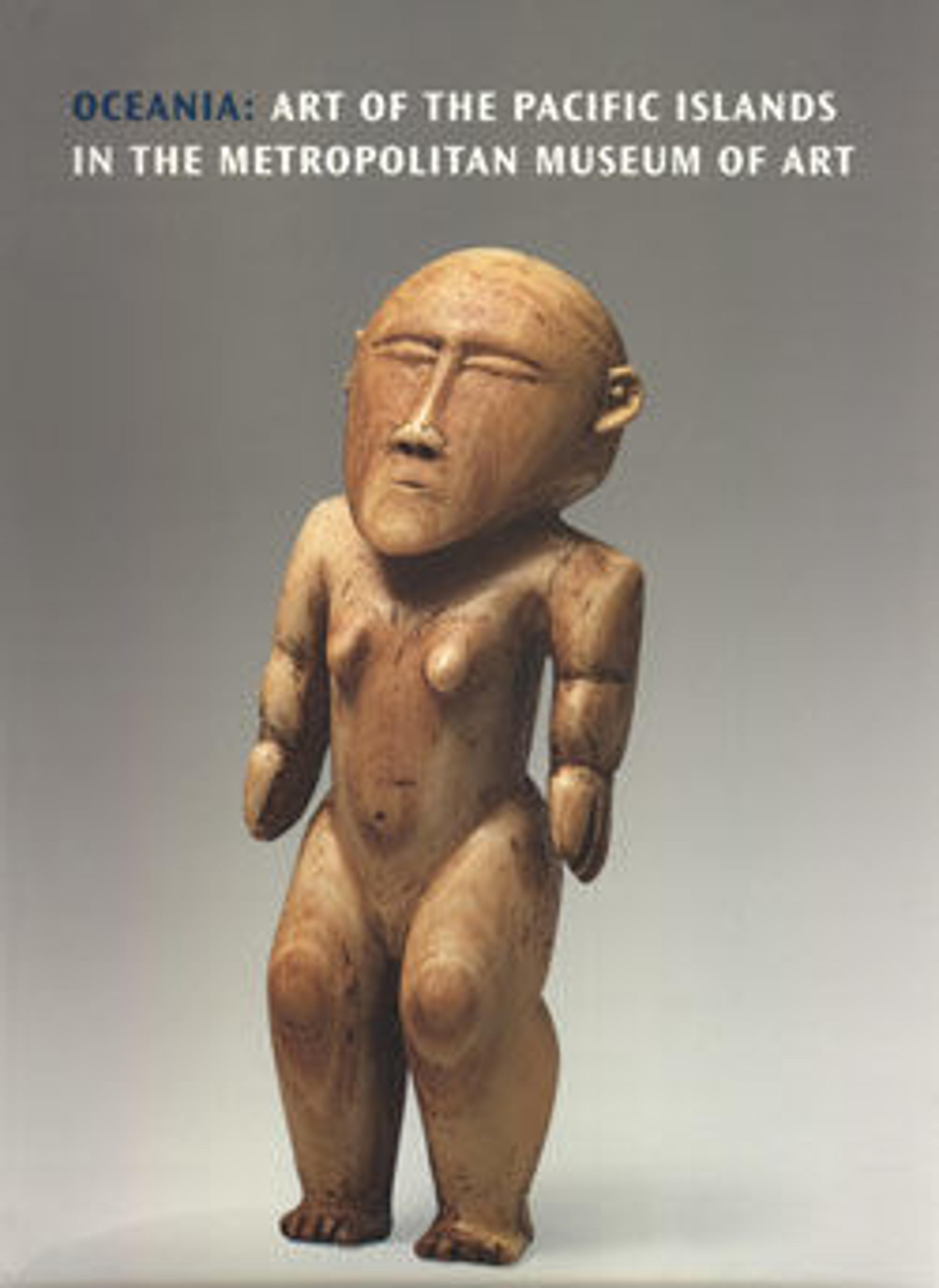Flute Stopper
For many New Guinea peoples, flutes are, or were, among the most sacred and important of all musical instruments. Sacred flutes were often made from hollow cylinders of bamboo and played, like a Western flute, by blowing through a hole in the side of the instrument near the upper end. The tops of side-blown flutes were frequently sealed with ornamental flute stoppers. Some of the finest flute stoppers were made by the Biwat people of the Yuat River in northeast New Guinea. Biwat flute stoppers typically portray stylized human images with small bodies and large heads with extremely high domed foreheads. Although they depict human figures, the stoppers adorned ashin, flutes associated with crocodile spirits. Ashin flutes were used, in part, during initiation rites in which novices crawled into the mouth of a large crocodile effigy to be cut by its teeth. The teeth, actually sharp implements wielded by the initiators, made cuts that healed into permanent scarification patterns on the novices’ bodies, marking them as initiated individuals.
Artwork Details
- Title: Flute Stopper
- Date: late 19th–early 20th century
- Geography: Papua New Guinea, Lower Sepik, Yuat River region
- Culture: Biwat people
- Medium: Wood, hair
- Dimensions: H. 21 5/8 x W. 4 1/2 x D. 5 1/2 in. (54.9 x 11.4 x 14 cm)
- Classification: Wood-Sculpture
- Credit Line: The Michael C. Rockefeller Memorial Collection, Bequest of Nelson A. Rockefeller, 1979
- Object Number: 1979.206.1415
- Curatorial Department: The Michael C. Rockefeller Wing
More Artwork
Research Resources
The Met provides unparalleled resources for research and welcomes an international community of students and scholars. The Met's Open Access API is where creators and researchers can connect to the The Met collection. Open Access data and public domain images are available for unrestricted commercial and noncommercial use without permission or fee.
To request images under copyright and other restrictions, please use this Image Request form.
Feedback
We continue to research and examine historical and cultural context for objects in The Met collection. If you have comments or questions about this object record, please contact us using the form below. The Museum looks forward to receiving your comments.
